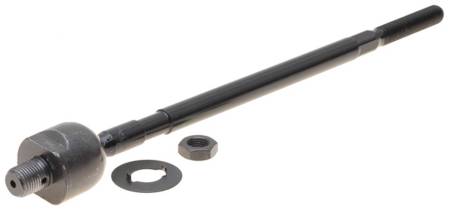Maintenance & Troubleshooting
Signs of Wear & Troubleshooting
- Unexpected noises: clunking noises while turning your vehicle's steering wheel may indicate tie rod end and sleeve wear. A knocking sound from the front end of the vehicle during low speed steering often indicates a problem with the outer tie rod end.
- Vehicle wandering: if your vehicle pulls to the side while driving at speed, braking, or going over bumps, tie rod end and sleeve wear may be the cause.
- Tire wear: excessive tire wear may indicate tie rod end and sleeve wear.
- Sagging tires: bad tie rods cannot properly support the wheels of your vehicle, resulting in sagging tires as a common sign of tie rod problems.
- Vibration while driving: loose tie rod connections will allow your tire to wobble on its axis. This wobble may be felt as a vibration or shaking in the steering wheel and front axle while driving your vehicle.
- Excessive play in steering linkage: excessive movement or play in your vehicle's steering linkage may indicate tie rod end and sleeve wear.
- Alignment issues: an inability to set the proper alignment for your vehicle may be a sign of tie rod end and sleeve wear.
Good Maintenance Practices
- Inspect or have your tie rod components inspected for signs of wear. Potholes, bumpy road conditions, and minor accidents can all result in tie rod wear, and in extreme instances, bending or breakage. Inspect your tie rod components regularly, following exposure to events that may harm them, or when you experience signs of tie rod component wear.
- Keep your tie rod ends lubricated. Road hazards like rough terrain or hitting curbs can damage tie rods and cause lubrication to leak out. Once lubrication is lost, the tie rod may loosen and bind up, preventing proper function. Check or have your tie rod ends checked and lubricated if necessary.
- Use a sleeve rotating tool to rotate your tie rod end adjusting sleeve and apply penetrating oil to the clamps and sleeve before loosening it. Proper sleeve rotation is key to helping prevent damage and a loose fit between the sleeve and tie rod end.
- Installation of new tie rod components can interfere with the alignment of your vehicle. Perform a full four-wheel vehicle alignment after any tie rod replacement.

 WARNING: Cancer & Reproductive Harm -
WARNING: Cancer & Reproductive Harm -
Write the First Review!